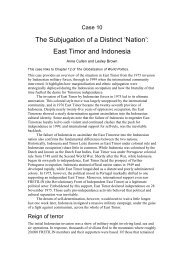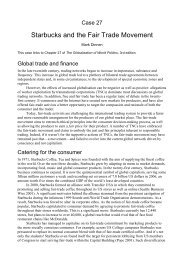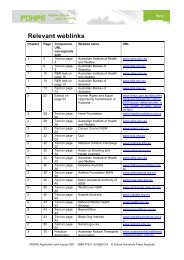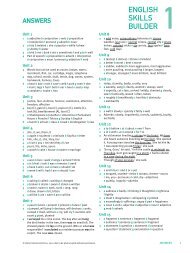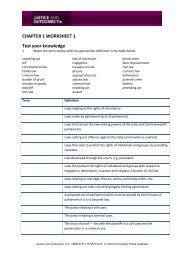2 Chapter 6 ⢠organising elements Organising elements
2 Chapter 6 ⢠organising elements Organising elements
2 Chapter 6 ⢠organising elements Organising elements
Create successful ePaper yourself
Turn your PDF publications into a flip-book with our unique Google optimized e-Paper software.
12<br />
Grouping <strong>elements</strong><br />
The two main types of <strong>elements</strong> are metals and nonmetals,<br />
with metals comprising nearly three-quarters of<br />
all <strong>elements</strong>. In addition, there are some <strong>elements</strong> with<br />
properties that are between those of metals and nonmetals.<br />
These <strong>elements</strong> are termed metalloids.<br />
Metals<br />
Metals have many properties in common.<br />
Pure metals are:<br />
• lustrous (shiny)<br />
• able to conduct heat and electricity<br />
• malleable (able to be beaten into<br />
a new shape)<br />
• ductile (able to be drawn into a wire)<br />
Metals are divided into different groups<br />
according to their position in the<br />
periodic table.<br />
Group 1 metals<br />
The alkali metals, such as sodium and<br />
potassium, are found in group 1—the<br />
far left column. Their position tells<br />
us that the uncharged atoms of all the<br />
alkali metals have just one electron in<br />
the valence shell. The alkali metals have<br />
quite a low melting point and are soft and<br />
highly reactive. If you were to see them<br />
in their pure state, they often resemble<br />
plasticine that, when cut, is very briefly<br />
shiny silver before reacting with the air to<br />
become white again. Alkali metals react<br />
very strongly—some violently—with<br />
water, producing hydrogen gas and an<br />
alkaline solution. (An alkali is a soluble<br />
base.) The further down the group you go,<br />
the more violent this reaction.<br />
<strong>Chapter</strong> 6 • <strong>organising</strong> <strong>elements</strong><br />
Fig 6.10 Xxxx.<br />
1<br />
2<br />
3<br />
4<br />
5<br />
6<br />
7<br />
Fig 6.11 Xxxx.<br />
Group 2 metals<br />
The alkaline earth metals, such as magnesium and<br />
calcium, are found in group 2. Their position tells us<br />
that the uncharged atoms of all the alkaline earth metals<br />
have two electrons in the valence shell. The alkaline<br />
earth metals have quite a low melting point and are<br />
relatively soft and very reactive, although in general they<br />
are not quite as reactive as group 1 alkali metals. Like the<br />
alkali metals, alkaline earth metals also react with water,<br />
some strongly, producing hydrogen gas and an alkaline<br />
solution. Again, the further down the group you go, the<br />
more reactive the metal.<br />
Fig 6.12 Potassium reacting with water<br />
produces a spectacular reaction.<br />
Metals Metalloids Non-metals<br />
B<br />
Si<br />
Ge As<br />
Sb<br />
Te<br />
Po<br />
Fig 6.13 Magnesium, an alkaline earth metal,<br />
(a) before burning and (b) burning.<br />
a <br />






